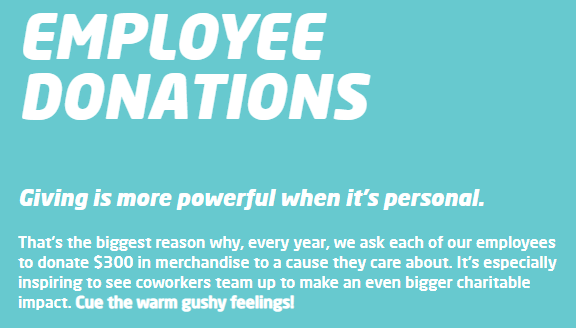This post continues a series about partnering with nonprofits. In the previous post I talked about different models for what those partnerships can look like. In this post I will talk about three of the different benefits that businesses can get from such partnerships - what I call visibility, looking good, and feeling good.
Visibility means being able to put your company name in places where either more people will see it or different people will see it than what you could achieve with other marketing approaches. One of the most familiar ways to do this is through event sponsorship. For example, below there are three photos posted by the Special Olympics showing athletes competing in the 2017 World Games.



Company logos are visible in all three images. For some of those companies, the brand is already familiar to most people. Coca-Cola hardly needs this event sponsorship to make people aware of their soft drinks. But repetition helps position a brand in the forefront of consumers' minds (if you want to know more about that, check out this entertaining article on the effects of repetition). And for a company that isn't already a household name, partnering with a nonprofit that has a big audience, as is clearly the case with Special Olympics, can help more people become aware of your brand. That being said, if you're just after visibility, there are other ways to achieve it than partnering with a nonprofit. Most of the time, a business that provides support to a nonprofit is going to also be after a second benefit, which is looking good.
Here's a picture of a truck owned by the waste collection company in my area.

Their normal trucks are painted blue. Between that and the fact that pink is not a common vehicle color, this truck certainly catches your attention. But that's only part of the point. What the company is really trying to achieve is to connect their brand to a cause that many people support, namely, fighting breast cancer. Why is this helpful? Well, in principle, it could be because consumers make careful, calculated decisions, factoring in the corporate social responsibility activities of different businesses. More likely, though, it's simply that when two things become associated in our mind, things we associate with one of them become linked to the other as well. If we feel good about organizations fighting breast cancer, then some of that good feeling will rub off on the waste collection company. And consumers are more likely to buy from companies they feel good about.
Of course, there are limits to this. If Philip Morris makes a major donation to the American Cancer Society, that isn't necessarily going to make Philip Mooris look good. It could easily backfire, as that association feels dissonant for a lot of people. If you look at the Philip Morris website, you'll see that they choose other causes to try to link their brand to, such as environmental sustainability and inclusivity. It is also important for nonprofits to remember that feelings can rub off in both directions. If a major corporate sponsor is suddenly in the midst of an ethics scandal, that could damage the nonprofit's reputation, or force the nonprofit to terminate the relationship and thus lose the funding that goes with it. If you're interested, here's a very readable article that discusses some of the ins and outs of brand associations.
The first two benefits are probably the most obvious ones, but there's a third major benefit to partnering with a nonprofit that often gets less attention, and that is how it impacts the relationship between the business and their employees. If partnering with a nonprofit can make consumers feel good about your company, it can do the same thing with your employees. And if you do it right, the employee feel-good boost can be much larger. Here's a short passage from the website of Brooks Sports, a major manufacturer of running shoes:

Personally I think this is brilliant. The company could generate a feel-good vibe among its employees just by making donations and then publicizing them in internal communications - look at how we're a company that cares about our community. But Brooks has gone one step farther and given their employees ownership over this process. What's interesting here is that a donation of $300 in merchandise doesn't create great photo ops for an external audience. For that, people are expecting to see the really big checks that take two people to hold up. So this program seems more aimed at an internal audience - it's likely about building employee loyalty and morale. Although the benefits of that aren't necessarily as immediately obvious, it can have a substantial impact on the bottom line - less turnover, higher productivity, better functioning teams, and so on. There's been a lot written on this topic, but as a starting place, here's a short article on CSR and employee engagement.
In this post I've only given a brief overview of three possible benefits to partnering with a nonprofit. My goal is really just to get you thinking about supporting a nonprofit not just as a "good work," but as good business. Ideally, I think it should be both, because if your support isn't authentic, you're not going to get the full benefit of the relationship, or it could even backfire. But I think it makes sense not only for the business but also for the nonprofit to structure the arrangement so that the business does receive meaningful benefits that are roughly balanced with the benefits the nonprofit receives. That's what's going to make the relationship sustainable over the long term.